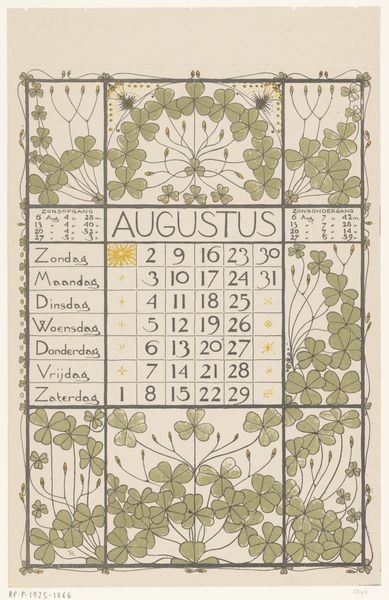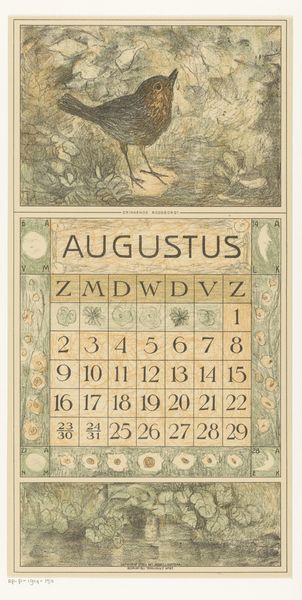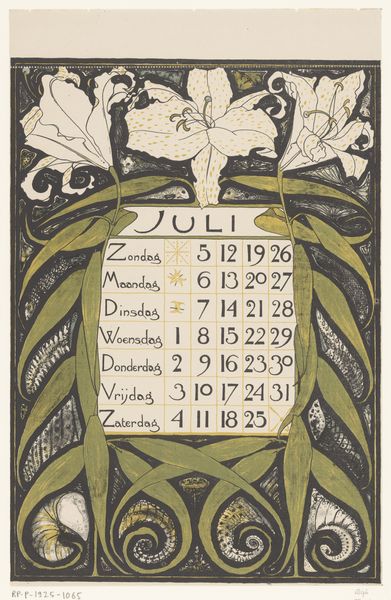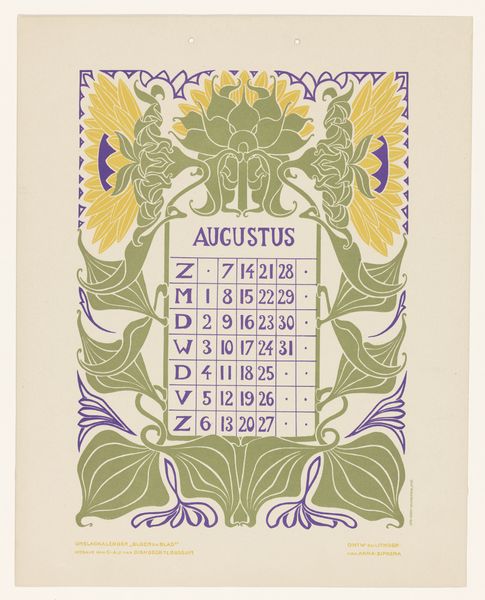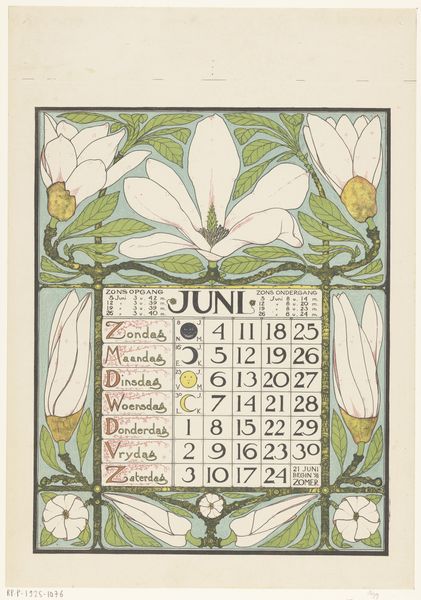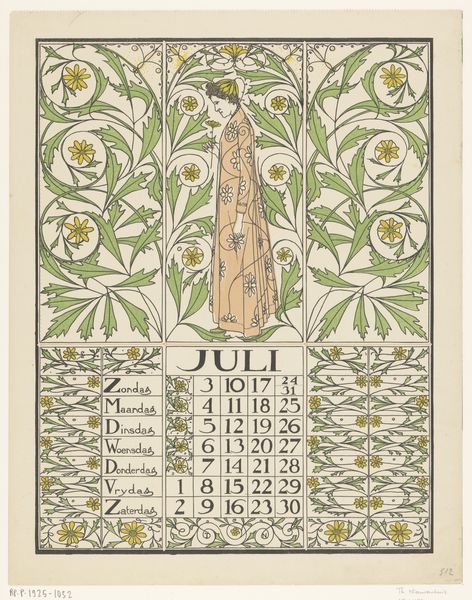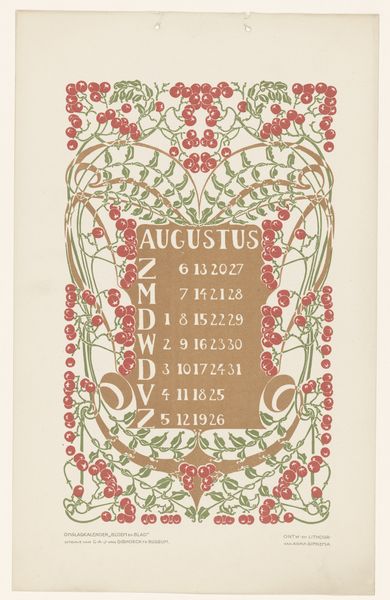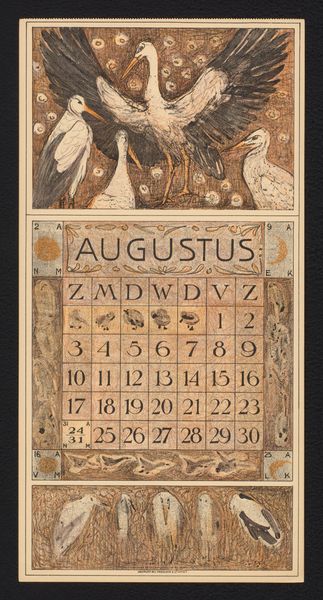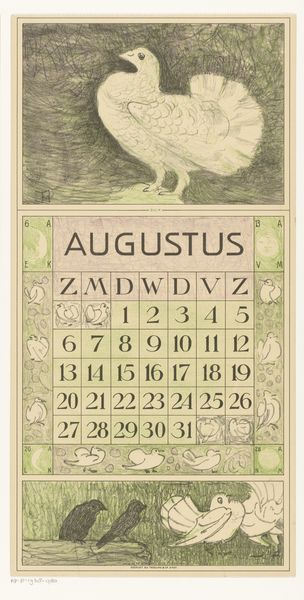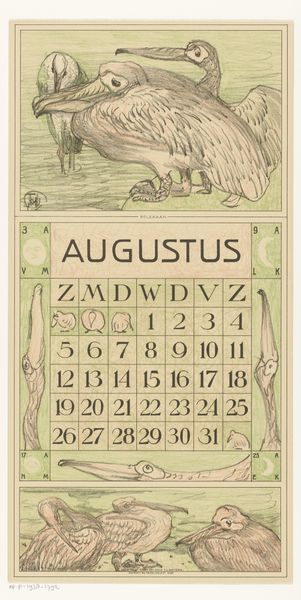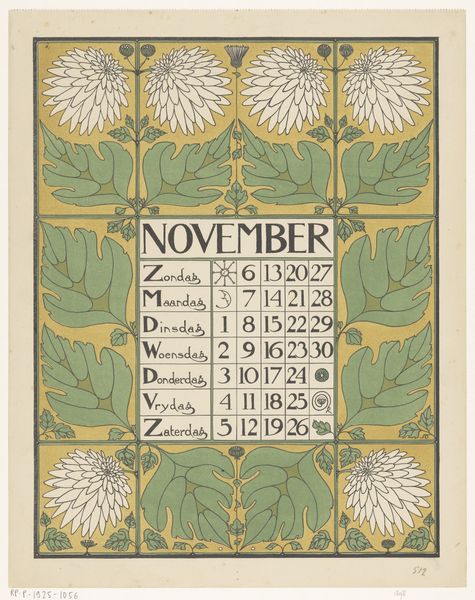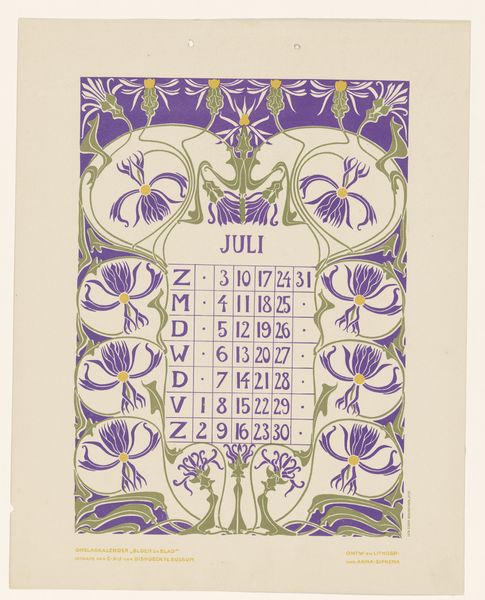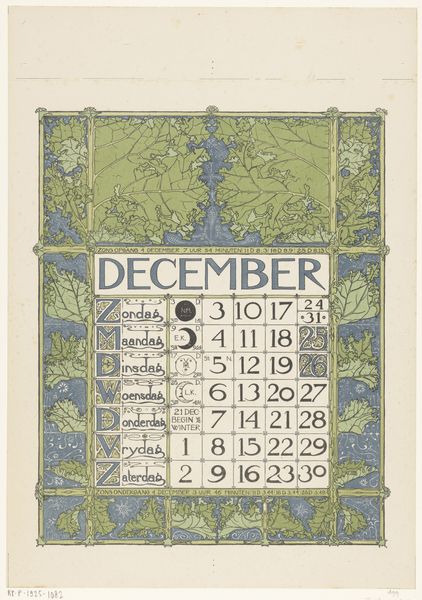
drawing, graphic-art, print, paper, poster
#
drawing
#
graphic-art
#
art-nouveau
# print
#
landscape
#
paper
#
decorative-art
#
poster
Dimensions: height 357 mm, width 284 mm
Copyright: Rijks Museum: Open Domain
Editor: This is "Kalender voor augustus 1898," a poster designed by Theo Nieuwenhuis. It’s currently held at the Rijksmuseum. The art nouveau style gives it an immediate sense of elegance, almost like stepping back into a bygone era. All of the nature motifs are a bit much, but in a decorative way. How do you interpret this work and its visual language? Curator: It is interesting how Nieuwenhuis embeds the passage of time within a decorative framework. The very structure alludes to cycles – nature, certainly, with the fronds and stylized berries, but consider those hanging lanterns too. What might those suggest to you, remembering that this was made in 1897? Editor: Hmm… I’m not sure. The lanterns make me think of celebrations, or perhaps important dates? Like birthdays marked with hanging lights? Curator: Exactly! Light as a symbol of enlightenment and time marked by ritual. Notice the children marching at the bottom, parading with flags. They are cultural symbols of national identity but presented as design elements rather than patriotic statements. Do you see how those two readings, design and social symbolism, start to merge? Editor: That’s true; the Dutch flag and these figures make the calendar Dutch. So he’s weaving national pride into something functional and beautiful. Curator: Precisely. It speaks to how visual culture transmits ideals and belonging, becoming part of collective memory, as well. Each month becomes tied to imagery associated with values of a nation. Editor: I never considered a simple calendar being capable of such cultural significance. This has made me think a lot more about what this kind of imagery does. Curator: Me too. It reminds us of how deeply symbolic images are.
Comments
No comments
Be the first to comment and join the conversation on the ultimate creative platform.
